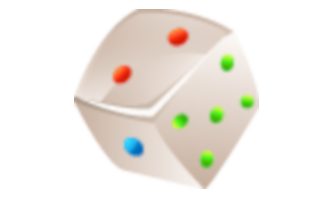Ordering Fractions
Mathematics, Grade 5
Ordering Fractions
Study Guide

Ordering Fractions
Flash Cards

Ordering Fractions
Quiz

Ordering Fractions
Worksheets

Ordering Fractions
Games

Study Guide Ordering Fractions Mathematics, Grade 5
❮
1
/
2
❯
ORDERING FRACTIONS A fraction consists of two numbers separated by a line. The top number (or numerator) tells how many fractional pieces there are. In the fraction 3/8, we have three pieces. The denominator of a fraction tells how many pieces a whole object was divided into. The fraction 3/8 tells us that the whole object was divided into 8 pieces. How to compare and order fractions: If the denominators of two fractions are the same, the fraction with the largest numerator is the larger fraction. For example: 5/8 is larger than 3/8 because the pieces in the whole are the same and five pieces are more than three pieces. If two fractions have different numerators and denominators it is difficult to determine which fraction is larger. It is easier to determine which is larger if both fractions have the same denominator. Multiply the numerator and denominator of one fraction by the same number so both fractions will have the same denominator. For example, if 5/12 and 1/3 are being compared, 1/3 should be multiplied by 4/4. It does not change the value of 1/3 to be multiplied by 4/4 (which is equal to 1) because any number multiplied by 1 is still the same number. After the multiplication (1/3 * 4/4 = 4/12), the comparison can be made between 5/12 and 4/12. You may have to multiply both fractions by different numbers to produce the same denominator for both fractions. For example if 2/3 and 3/4 are compared, we need to multiply 2/3 by 4/4 to give 8/12 and multiply 3/4 by 3/3 to give 9/12. The fraction 3/4 which is equal to 9/12 is larger than 2/3, which is equal to 8/12. The fraction with the larger numerator is the larger fraction if the denominators are the same. © Copyright NewPath Learning. All Rights Reserved. Permission is granted for the purchaser to print copies for non-commercial educational purposes only. Visit us at www.NewPathLearning.com.
Try This! Compare and Order the following fractions: ¼, ¾, 4/4, 2/4 = ____________________________________________ 7/9, 3/9, 1/9, 5/9 = __________________________________________ ½, 2/3, ¼, 4/5 = ____________________________________________ ¾, 7/8, 2/5, 1/3 = ___________________________________________ © Copyright NewPath Learning. All Rights Reserved. Permission is granted for the purchaser to print copies for non-commercial educational purposes only. Visit us at www.NewPathLearning.com.
